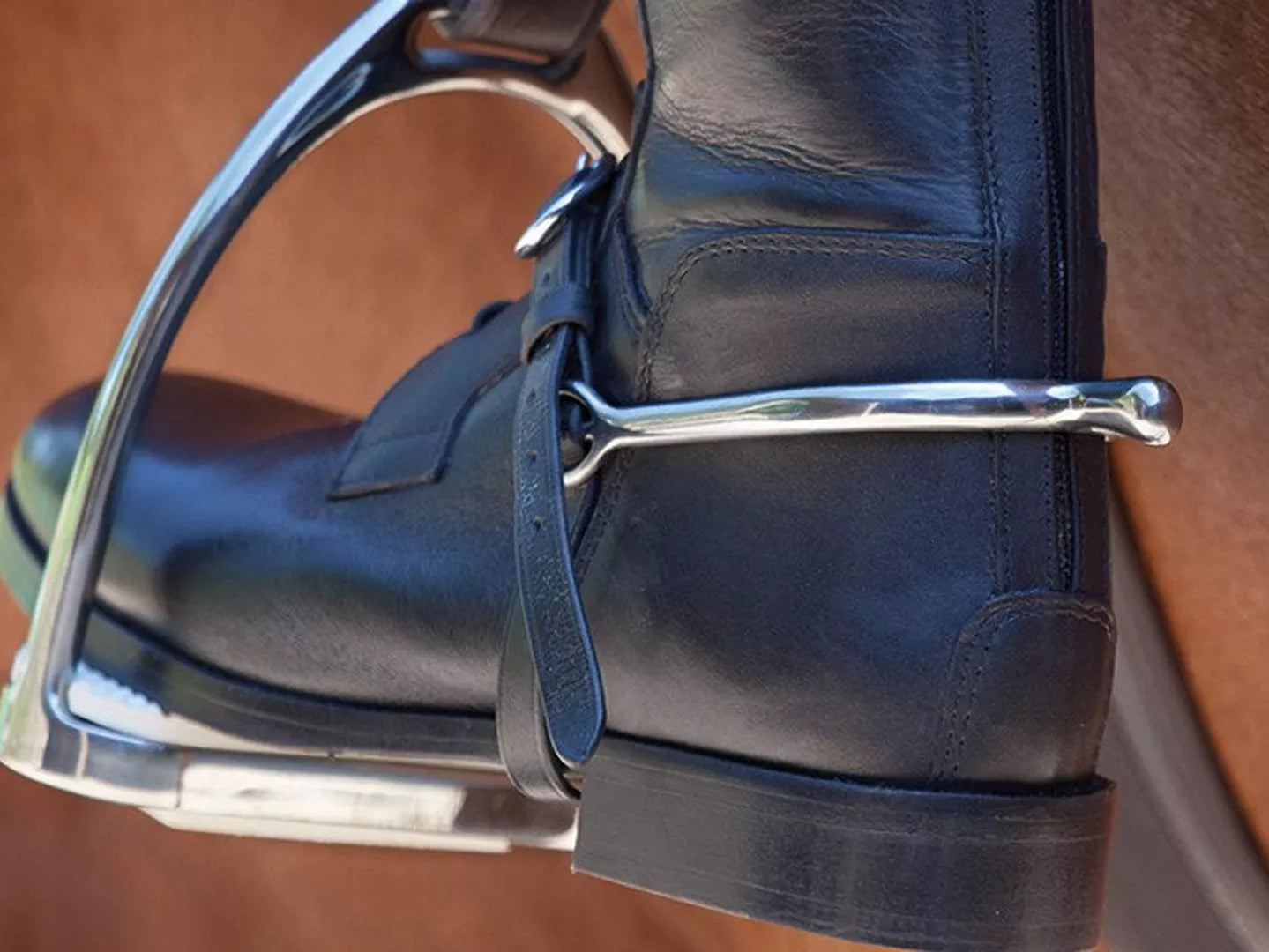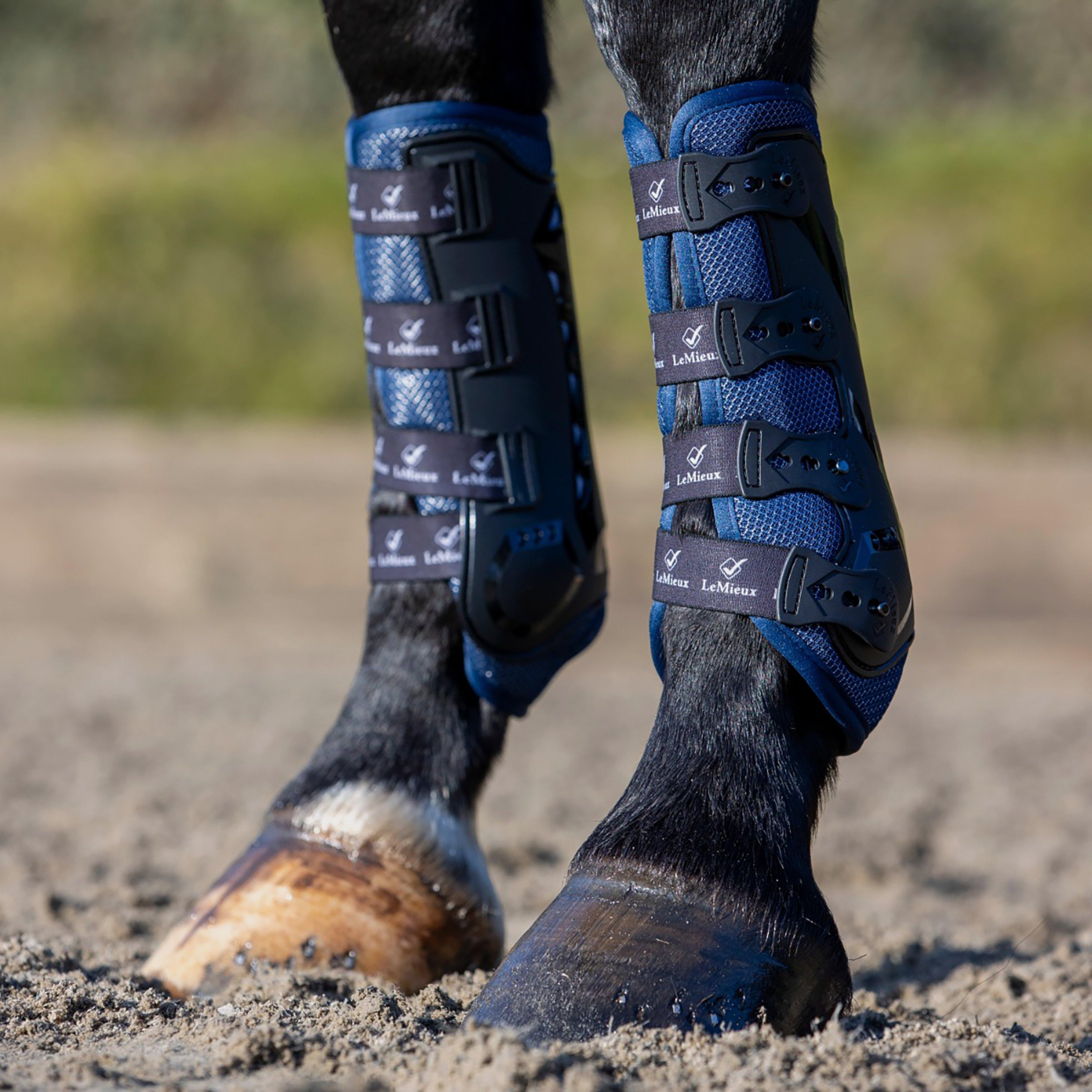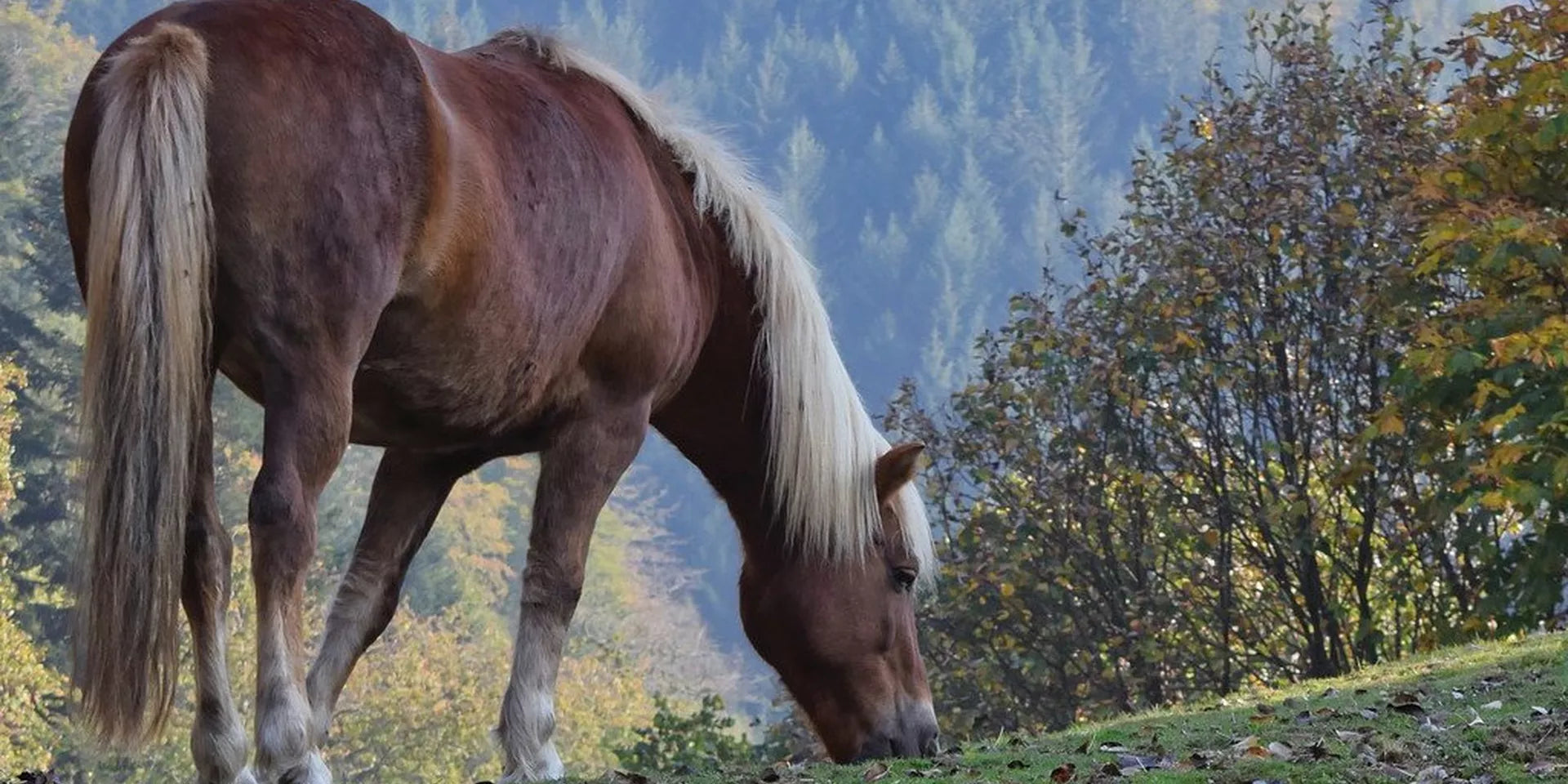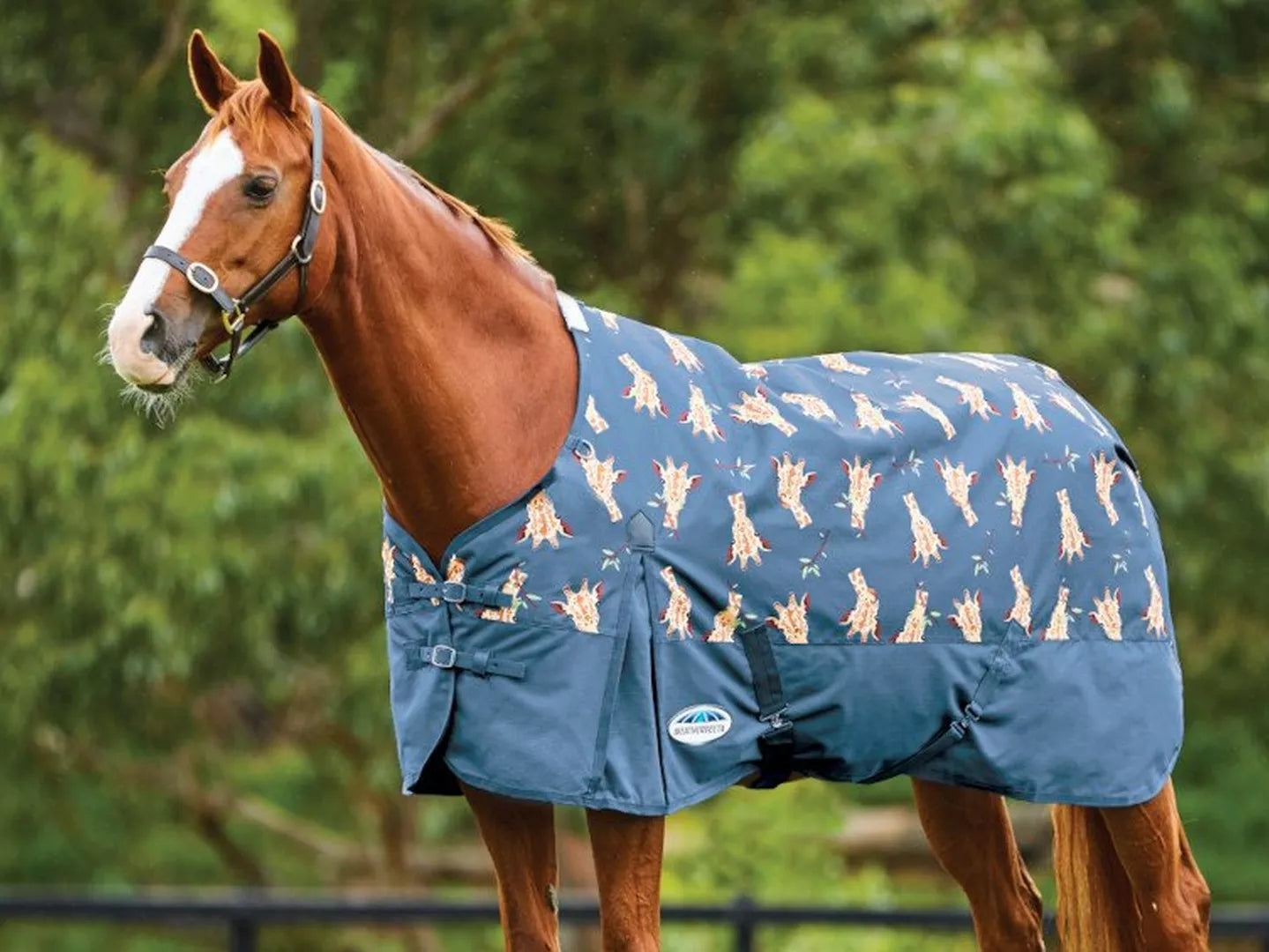Which bit for my horse? A common tack dilemma
It is hugely important to make sure all of your horse's tack fits correctly. Poorly fitted tack can lead to discomfort and injuries and can also lead to them acting out of character and misbehaving. A horse's mouth is a very sensitive area and so needs to be handled with care. It is therefore important to not only use a bit of the correct size but to also choose the correct kind of bit for your horse's needs. There are so many options when it comes to bits that it leads to lots of confusion. We're here to try to simplify the bitting world and hopefully help you to crack the common dilemma of 'which bit for my horse?'
How To Measure For The Correct Size Bit
Before you even think about changing your horse's bit you need to be able to recognise a well fitted bit. The bit should rest comfortable at the corners of the mouth and the rings shouldn't press hard against the horse's cheek otherwise it is too short in length. A bit that is too short will pinch and rub the skin at the corners of the mouth and on the cheeks. If the bit is too long there will be excess metal from the mouthpiece on either side of the lips. Then it could move side to side in the horses mouth, especially if you pull on one rein.

Sizes go up a quarter of an inch at a time. If your horse currently has a bit that fits but you wish to buy a new one you could simply measure the size of the current one. Remember you are measuring the mouthpiece not the rings too.
If you don't have a well fitted bit to compare with you should measure your horse's mouth. Simply take a piece of string and tie a knot in one end. Put the string through your horse's mouth with the string sitting on the outside of the lips on one side. On the other side mark onto the string with a pen or some tape where it meets the outside of the lips. The distance between the knot and the mark will be the size of the bit you need.
Here's an easy follow guide from Nueue Schule on how to measure for the correct size horse bit:
Choosing The Thickness
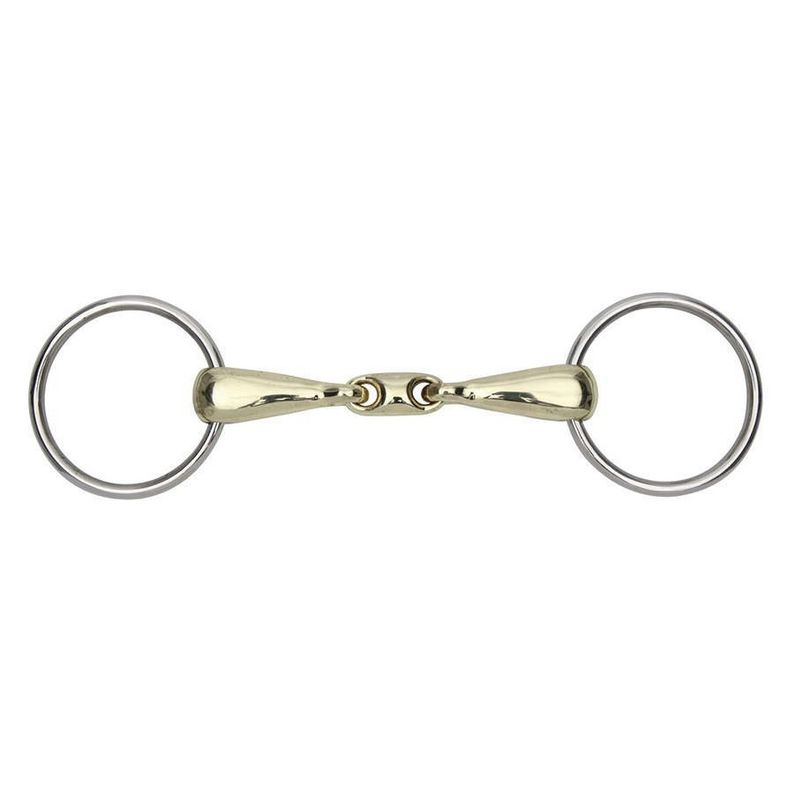
To start with consider the thickness. The thinner the mouthpiece, the more your horse will feel the effects of rein pressure. Thinner bits should encourage more of a reaction to contact. Thicker bits are often a good option for young or mouth sensitive horses as they can find the pressure of a thin bit to be sharp. If you're after a thick bit, the Shires Brass Alloy Training Bit (pictured right) could be a good option as it's 18mm wide. You should consider the size of the horse's mouth as it may not be appropriate to put a very thick bit on a small pony.
Choosing The Mouthpiece Joint
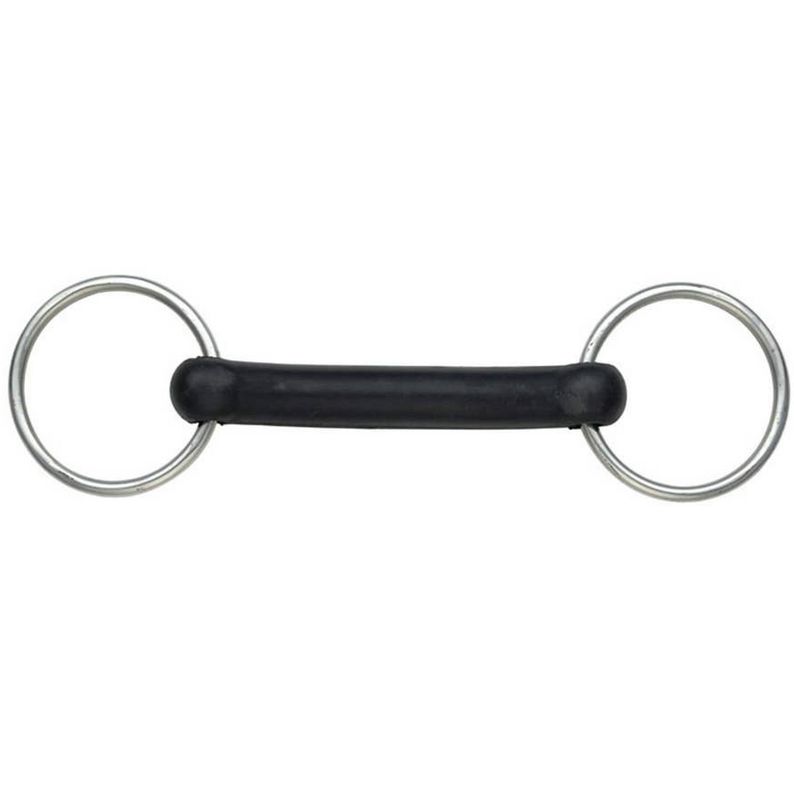
No Joints
an example is the Shires Flexible Rubber Mouth Snaffle. This is a very gentle bit - perfect for a young horse to use. A great bit for you to use for showing in-hand. And it only costs £9.99!
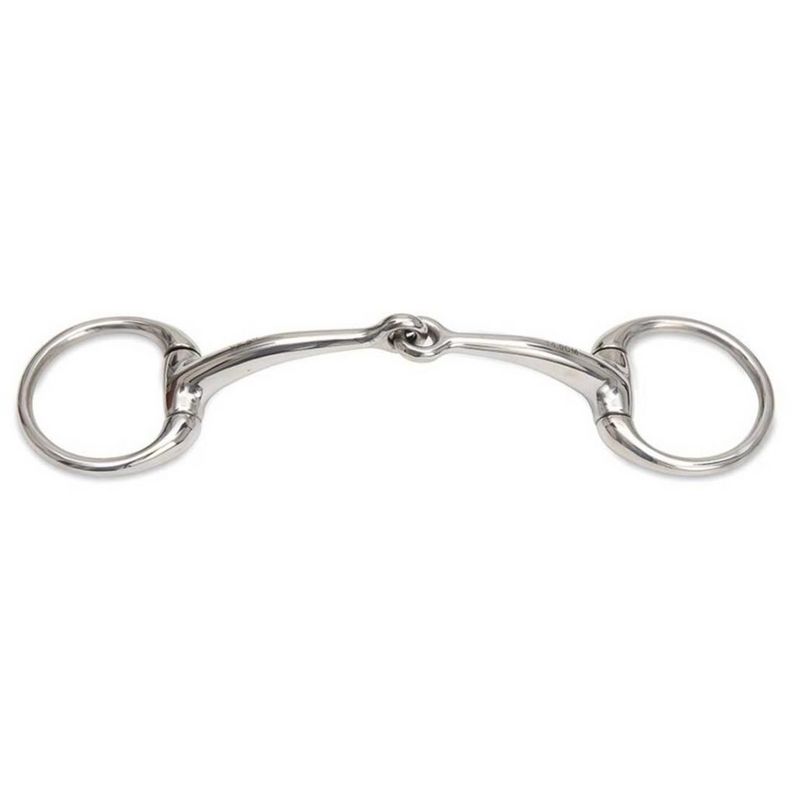
Single Jointed
This is a very common mouthpiece. The joint in the middle allows the rider to apply pressure to one side of the mouth more than the other. They can, however, have a nutcracker effect. When the bit moves, the joint will move up and down. It can clash with the roof of the mouth or the tongue causing discomfort. This could be a particular problem for a horse with little room between their tongue and the roof of their mouth. The example in the picture is the Shires Small Ring Curved Eggbutt Snaffle RRP 20.00.

Double Jointed
These bits are also split into different sections like above, however, they have an extra piece between the two halves. There are different forms this can take such as a French link (which is flat) or a lozenge (a rounded piece). These are comfortable for many horses as they reduce the nutcracker effect. However, not all horses are the same and some don't like the tongue pressure that comes with the extra link. Pictured is the Shires Bevel Bit with Copper Lozenge RRP £19.99.
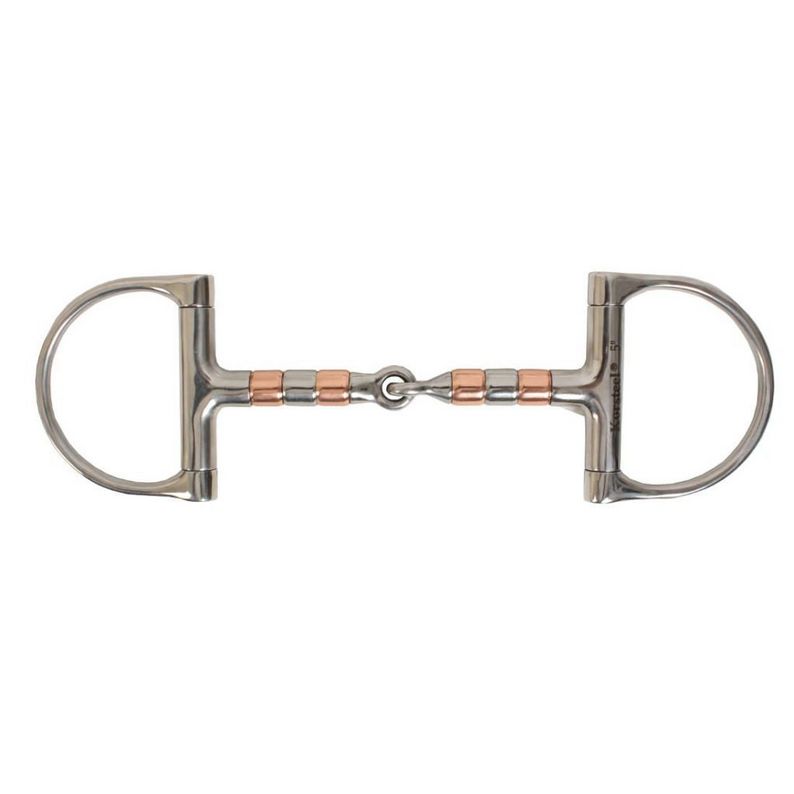
Rollers
Some bits have rollers on the mouthpiece. These are pieces that rotate and the horse can move using its tongue. The idea is to encourage the horse to mouth and play with the bit. It helps them to become more relaxed in the mouth and jaw and hopefully be more accepting of the bit. In the picture to the right is the Korsteel D-Ring Snaffle with Copper Rollers RRP £17.99.
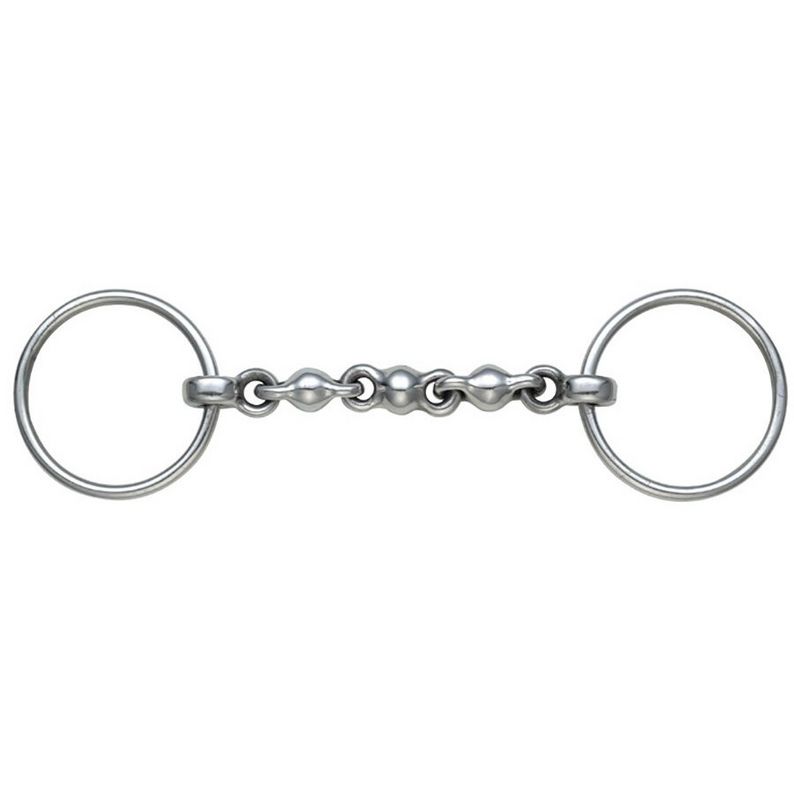
Waterford Bit
A Waterford bit has multiple joints and links with the appearance of a chain. The entire mouthpiece is movable and so encourages a horse to play with the links in their mouth. In result of them doing so, they are typically softer on the reins and reduces them from leaning or pulling. As a waterford restricts a horse from grabbing hold of the bit with their tongue and teeth, it means they are unable to lean on the bit as the joints collapse and move around. In result of this, the Waterford is a relatively strong and severe bit for a horse - so is best to use for those very strong horses. The bit also encourages a horse to relax and soften the jaw. An example of a Waterford is the Shires Loose Ring Waterford RRP £16.99.
Choosing The Right Bit Ring
Warning, even more choices coming! Again we'll try and just mention some of the most common designs of bit rings and why you might pick them. There are some styles we won't touch upon but you can browse all of them online.

Loose Ring
The rings can rotate around through the hole in which they're attached to the mouthpiece. This allows the mouthpiece some independence from the rein contact in terms of being able to move in with the horse's tongue and jaw. This bit makes it hard for the horse to lean on or take hold of the bit. It is very important it fits correctly, if too small when the ring rotates it will pinch the horse's skin. It can also be possible to pull this bit through the mouth if you pull on one rein as the rings don't offer much resistance to movement from side to side. Pictured is the Korsteel Weymouth Loose Ring Bradoon RRP £12.99.
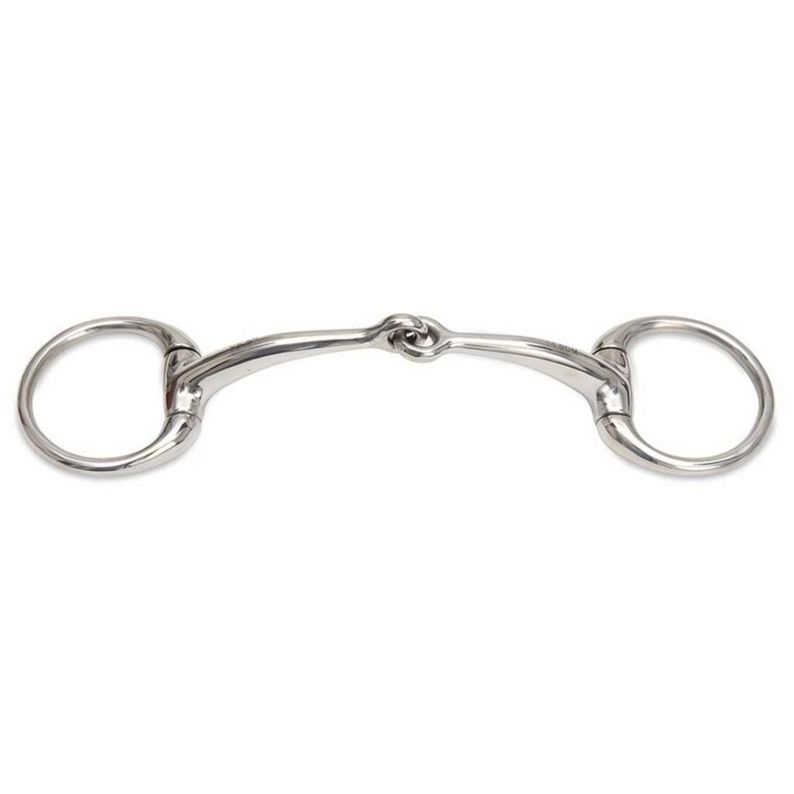
Eggbutt
This is a fixed ring option that offers consistency in the mouth. If you were to pull on one rein, the bit is less likely to move side to side in the mouth as it is with the loose ring. The mouthpiece is less able to follow the movements of the horse's mouth and is more reliant upon movements from the rein contact. Some horses may prefer this consistency while others may find it more restricting and unnatural. A fixed ring isn't the best option for horses who tend to lean on the bit. In the picture is the Shires Small Ring Curved Eggbutt Snaffle.
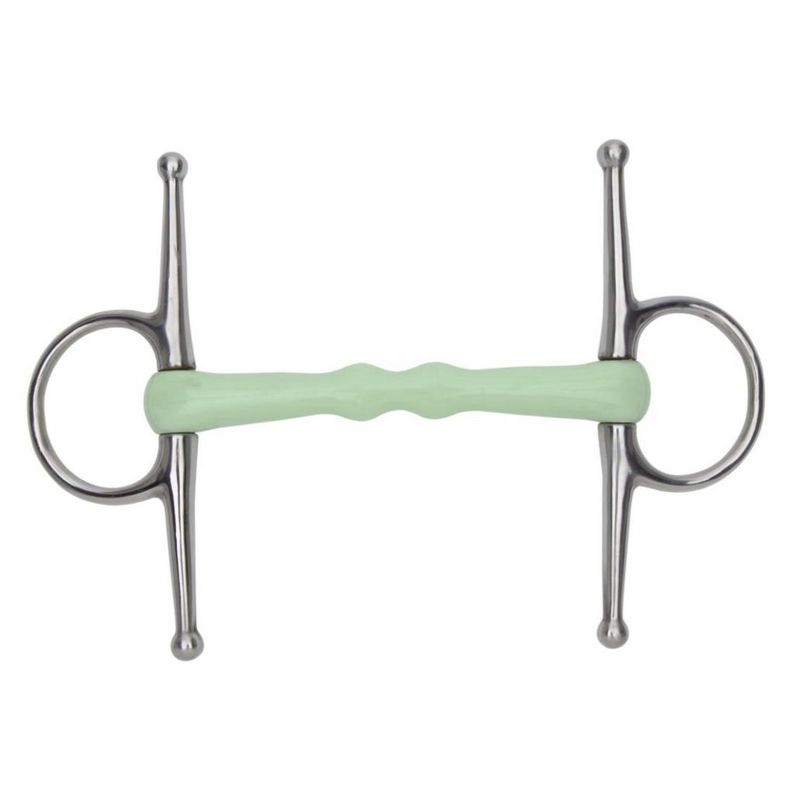
Full Cheek
This can be a good option for a young or inexperienced horse. The bars that protrude up the cheek help with head direction and turning. When you turn, rein pressure applies to one side of the bit more than the other. The bars on the opposite side will press against the cheek and encourage the horse to turn with its head. this is useful for horses who need to learn how to respond to turning aids or those who try to tilt their heads to avoid the pressure on the rein. The bars also stop the bit from being pulled through the mouth and is more effective at this than an eggbutt. Pictured is the Shires EquiKind Mullen Mouth Full Cheek RRP £28.99.
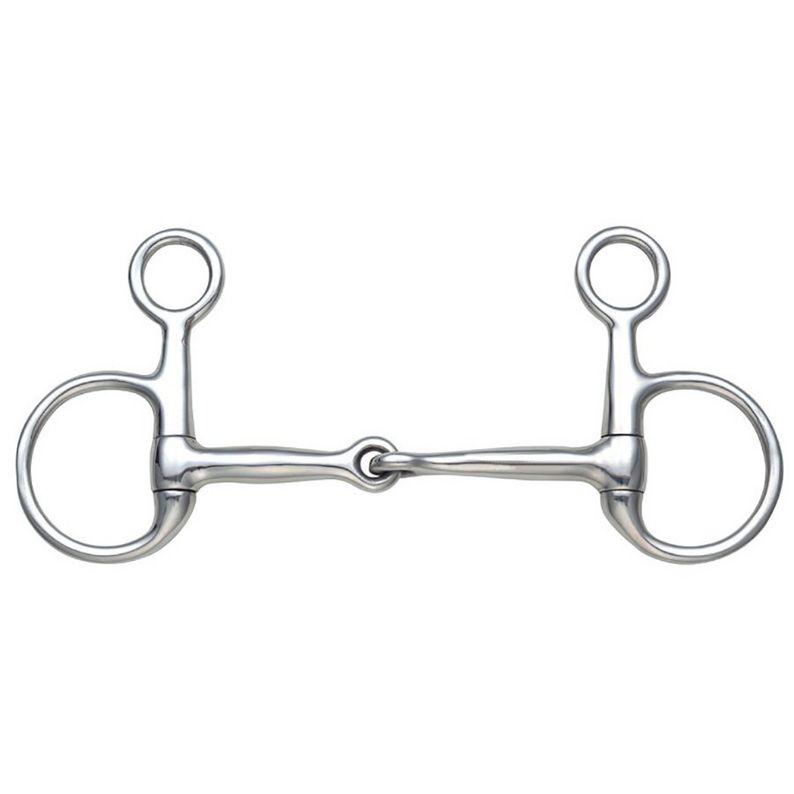
Hanging Cheek
This option is believed to exert a small amount of poll pressure making it easier for the rider to ask the horse for flexion and softness in the head. However, because this bit stays in a fixed position it can enhance the communication between the horse and the riders hands. In the picture to the left is the Shires Hanging Cheek Snaffle RRP £13.00.
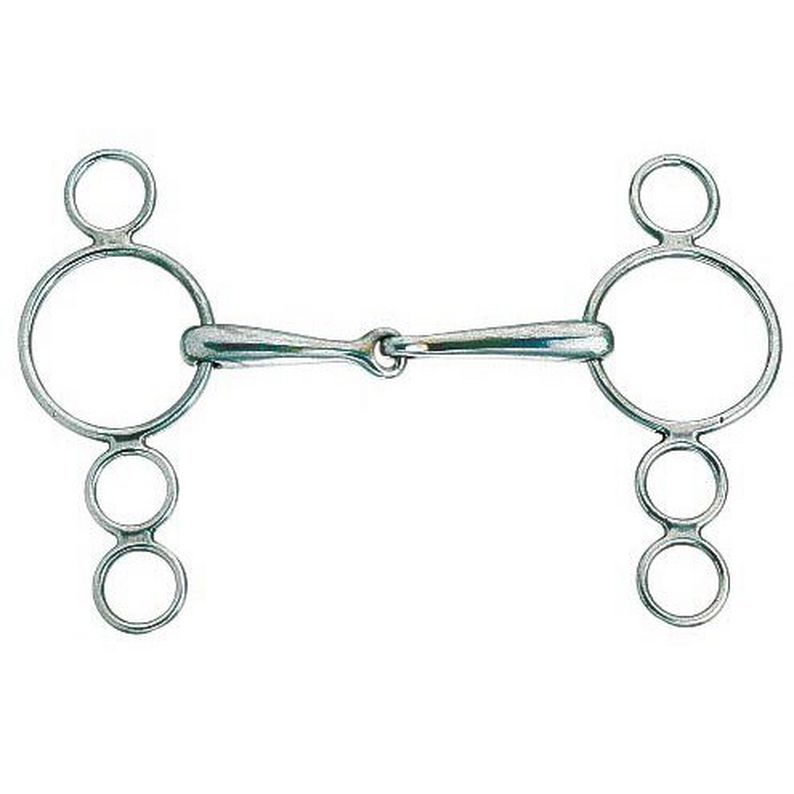
Gag
There are different styles of gag with the Dutch gag being one of the most popular. A gag is a leverage bit which applies pressure to the poll. You can simply choose the leverage by the different rings on the bit. Some gags have two rings and some three. The lower down the ring you choose, the more leverage you get and therefore greater pressure. You should use either 2 reins or a rounding with this kind of bit. The example in the image is the Korsteel 3 Ring Dutch Gag RRP £18.99.
Tom Thumb
We advice Tom Thumb bits to be used for the more experienced rider looking for slightly more control when riding. A Tom Thumb is a great bit to encourage the horse to improve their head carriage. By adding slight pressure to the poll, it encourages the horse to lower their head. Along with the lower loop on the bit, adding slight pressure to the tongue to again encourage them to soften their head into the bit. A great Tom Thumb bit is the Shires EquiKind+ Tom Thumb Jointed Bit RRP £21.99. The EquiKind+ coating also makes it perfect for horses who do not have a lot of room for a thicker mouthpiece.
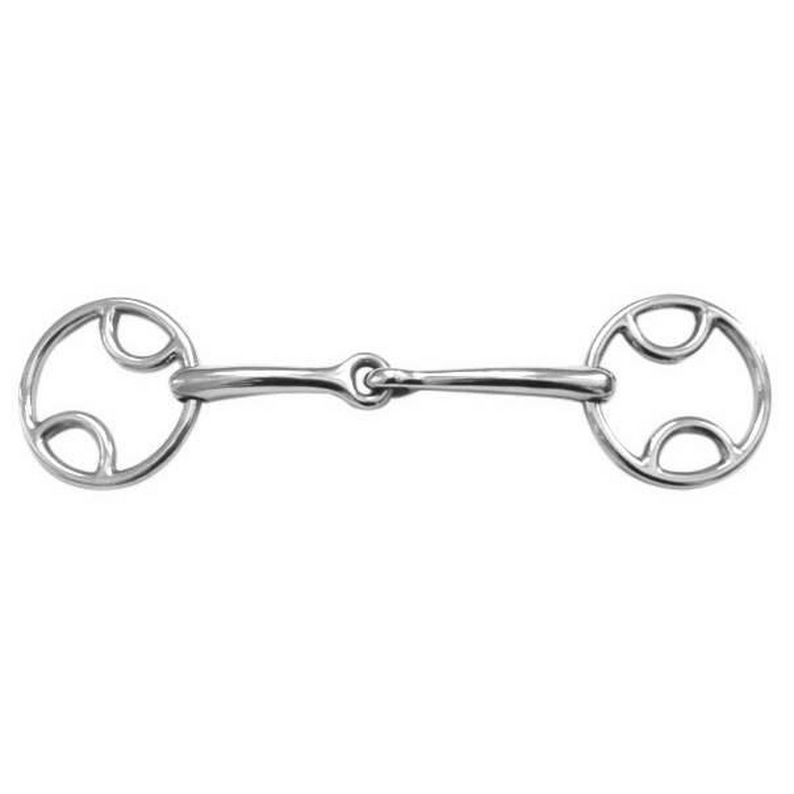
Bevel
A bevel (also referred to as a 'Wilkie') is a way to softly add poll pressure to encourage the horse to soften in the reins, lower their head carriage and gain contact with the bit. The Bevel provides more brake-power so is ideal for those horse's needing something slightly stronger than a snaffle. This is a great bit for a novice horse at a competition! A great Bevel bit to choose is the Shires Bevel Bit with Jointed Mouth RRP £14.99.
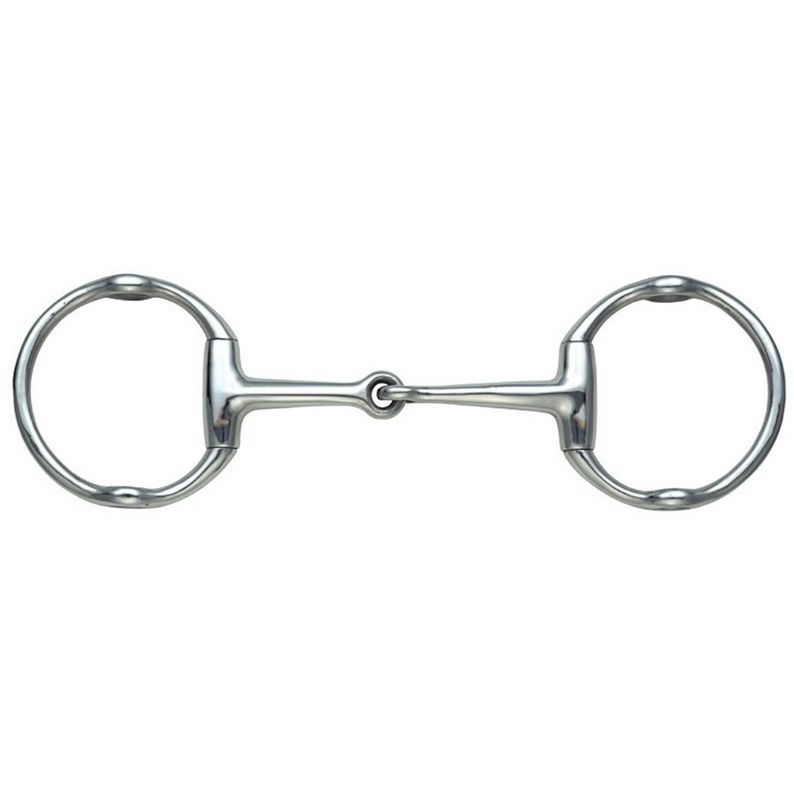
Cheltenham Gag
This a bit great for those strong, hard to control and heavy-in-the-hand horses. Designed to work on the horse's lips to encourage them to lift their heads slightly - resulting in less pressure and leaning on the bit. A Cheltham Gag requires double reins. A great training aid and answer to those experienced riders who have a strong horse. The first set of reins attach to the cheek strap and run through the bit. The second pair attach directly from the bit. A great example of a Cheltenham Bit is the Shires Cheltemham Gag RRP £18.99.
Choosing The Material
You will see bits made from many different materials so here's our guide to help you pick which might suit your horse.

Stainless Steel
This is the most common material that bits are made from. These bits do not rust and so has quite a neutral taste. Many horses are happy to use a stainless steel bit. However every horse accepts bits differently! Pictured to the right is the Shires Jointed Mouth Loose Ring Snaffle RRP £13.00.
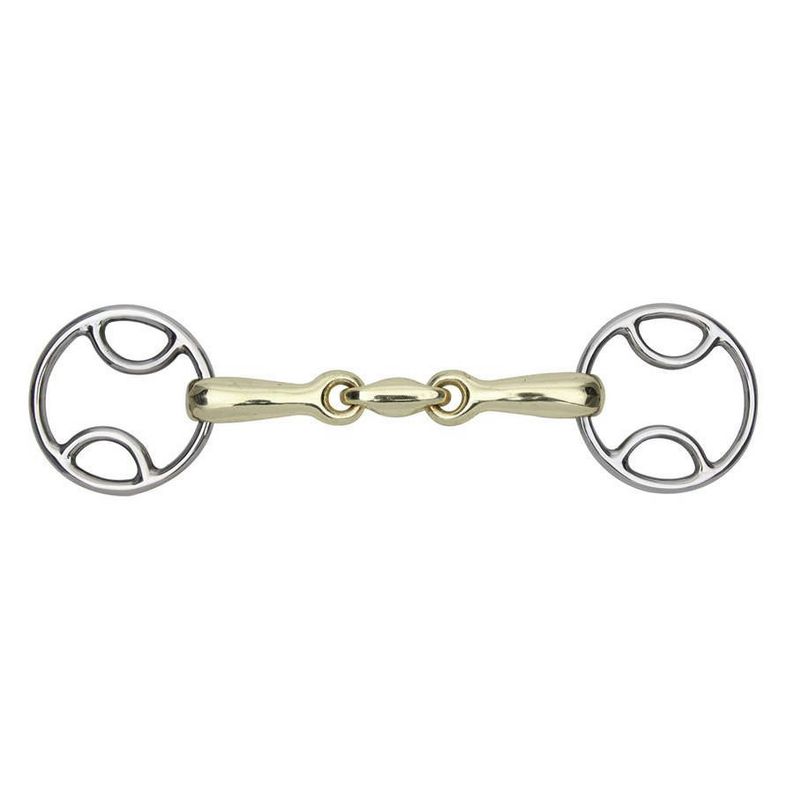
Copper/Brass
When your horse's saliva reacts with copper it causes the metal to rust. This is actually a good thing as it gives off a sweet taste. Some horses also like how tis bit will feel a bit warmer in their mouth than a steel one. Brass bits are alloyed with copper to produce a strong durable metal. In the picture is the Shires Brass Alloy Training Bit Loose Ring Snaffle RRP £33.99.

Sweet Iron
These bits will rust when in contact with your horse's saliva. This creates a sweet flavour that should encourage them to produce more saliva and mouth on the bit. Most horses enjoy the taste of this bit. Don't be alarmed if it starts to change colour, that's the rust. The pictured example is the Korsteel Sweet Iron Loose Ring Snaffle £9.99.
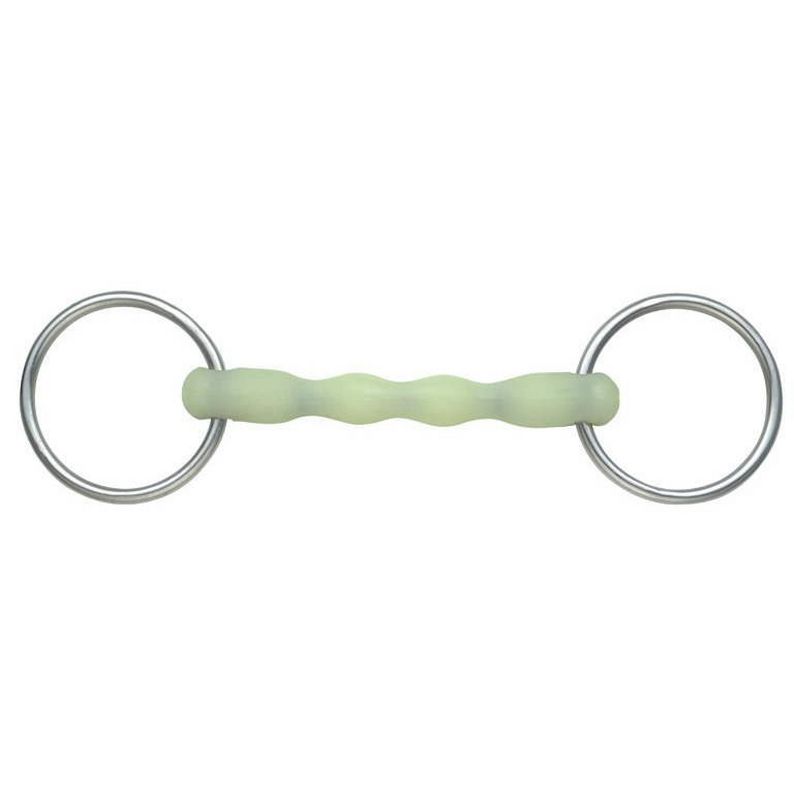
Plastic/Nylon/Rubber
These lightweight but strong coverings are normally found on stainless steel bits. They are good for horses who don't like the cold sensation of metal in their mouth. You'll find some of these bits have an apple flavour to encourage mouthing and salivation. If you have a horse who chews heavily on their bit these may become out of shape and teeth marks can make a rough surface. The bit in the picture is the Shires EquiKind Ripple Loose Ring Mullen Mouth Snaffle RRP £14.99.
Which bit for my horse in the dressage/show ring? I need a double bridle!
Have to use a double bridle for your class? To use a double bridle for showing classes or for your higher level dressage you'll have to decide on which bit best suits your horse. You shouldn't use double reins unless you are a knowledgeable rider.
Pelham
As mentioned earlier the gag bit can be used with two reins. Another option is a pelham. The Shires Double Jointed Copper Lozenge Pelham bit combines the action of a curb rein with a snaffle bit. The Pelham is more severe than other snaffles as it has a leverage affect on the jaw. However, for showing a Pelham is much softer than a double bridle. When you attach a snaffle rein to the pelham it helps to lift the horse's head. The curb rein then help to encourage flexion. The double joint with copper lozenge will soften the nutcracker action and assist with salivation. The Shires Double Jointed Lozenge Pelham RRP £35.00
Weymouth
Traditionally you would use a weymouth (also known as curb) and bradoon. A Weymouth has no links but is ported to make room for the tongue. The bradoon is a slimmed down version of a regular snaffle. The bradoon should be 1/4 to 1/2 inch longer to ensure both bits lie flat. You can buy them together as a set like the Shires Port Weymouth Set RRP £31.99 pictured (left). Some horses don't like the feel of a weymouth as they take up a lot of room in their mouth.


